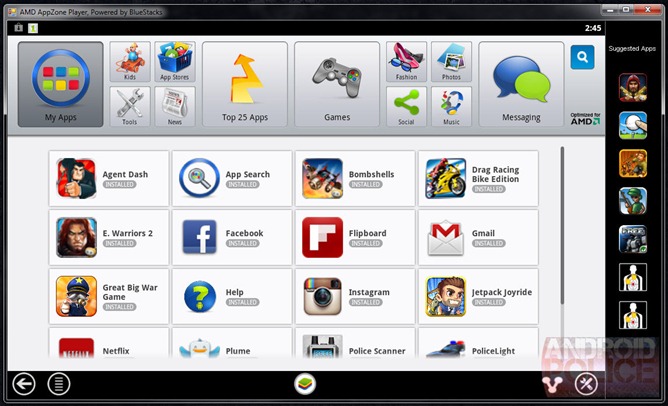Amd Appzone Player For Pc
The AppZone offers a handful of apps for Android The AMD AppZone Player is essentially an emulator for running Android apps on Windows systems and is powered by BlueStacks’ LayerCake technology. Emulators often cannot run all apps that were originally developed for being used on phones or tablets, since they have to upscale the application and its content to a larger screen, and a completely different processor environment. However, AMD that its AppZone Player has been optimised by BlueStack for running Android apps on systems with AMD Radeon graphics on board. BlueStack has also apparently optimised the emulator for AMD’s OpenGL drivers found on its APUs and GPUs. BlueStacks launched its own Android emulator in 2011, which virtualises an Android environment on a Windows desktop. You can easily download, install and run Android apps inside the BlueStacks emulation environment just like on a tablet or a phone. Downloading the AppZone Player is pretty straightforward: you can either it from the AppZone store or simply download an app and the site will ask you to install the Player.

Once installed, you can click the home page button to get the player home screen. The Player enables you to browse recommended apps that have been optimised for Android; it also has a search function that lets you find apps across app stores. You even get a small list of suggested apps that’s based on any apps you may have downloaded previously. BlueStacks is integrated with all the various app stores for Android, which you can browse through, and download and install apps. An interesting feature here is Cloud Connect, which lets you sync your apps and messages between the emulator and your Android phone or device.

Amd Appzone Player For Pc Free
To set up the service, click the settings button and then Cloud Connect and follow the on screen instructions. You will also need to download the BlueStacks Cloud Connect app on your Android device. Any apps you install on your system shows up in the Start menu and can be launched by simply clicking on it.